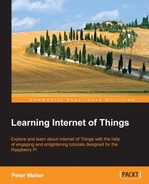IoT is not the same as sensor networks since Things neither need to be sensors, nor do sensor networks need to be connected to the Internet. Also, IoT is not the same as big data since neither Things are required to capture or generate data, nor do applications need to store the data centrally (in the Cloud) in big data stores. IoT is not part M2M since being on the Internet implies humans can (and want to) access these Things directly too. Furthermore, the latter, as well as CPS, also concern themselves with non-Internet protocols, transport of messages between machines and/or devices in the network, as well as automation, often in closed and controlled environments.
Being connected to the Internet is much more than simple connectivity and message transport. The Internet is open, meaning anybody can add Things to it. It also means they will want Things to interoperate in a loosely coupled manner. The Internet is not only open, but it also is the largest network in the world. It is also the foulest cesspit in the world. Connect something to the Internet, and you can be rest assured that somebody will try to take advantage of it or destroy it if they can, just for the sheer fun of it. Comparing IoT to M2M communication is like assuming that an experiment in a controlled laboratory environment will continue to work even when you let a bunch of 3-year-old kids high on caffeinated beverages enter the laboratory, equipped with hammers and a playful attitude, and promised ice cream if they destroy everything they could see.
While some are concerned that IoT is too limited to include people in the equation, and it invents new terminologies such as Internet of People and Things, this is already included in the definition we just saw where we noted that people are already connected to the Internet via computers when we connect Things. Such a definition is therefore not necessary. Others discuss a Web of Things (WoT), which is a subset of IoT, where communication is limited to web technologies, such as HTTP, browsers, scripting, and so on. This view might stem from equaling the Internet with the World Wide Web (WWW), where access to the Internet is made through browsers and URLs. Even though we will discuss web technologies in this book, we consider web technologies alone too limiting.
There are also misleading definitions that act more like commercial buzz words rather than technological terminology, such as Internet of Everything, promoting the idea of being something more than IoT. But what is included in Internet of Everything that is not already included in IoT? All connectable Things are already included in IoT. Things that cannot be connected directly (air or water), or indirectly (vacuum or happiness) cannot be accessed in Internet of Everything either, just because the name says so. Everything needs a Thing or a Person to connect to the Internet. There are claims that the Internet of Everything includes processes, and such, and would differ in that sense. But, in the definition we just saw, such processes would be simple corollaries and require no new definition.
